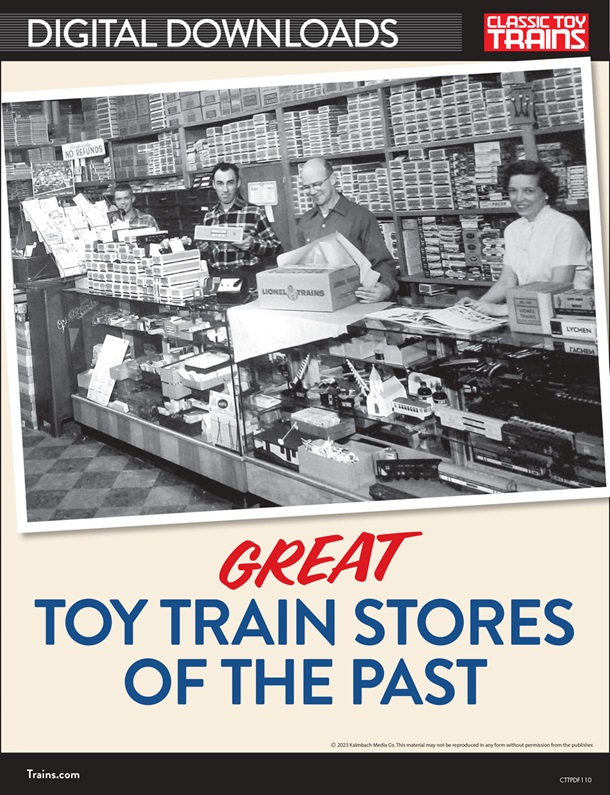I found this manuscript from the late John Grams in our manuscript files. There was no date on the envelope but it’s likely from the early 1990s. The article discusses 12 Lionel products that, while great inventions, were fraught with problems or didn’t work exactly as advertised. He included the following disclaimer:
“Lionel trains were sold as toys. They were fun, fairly reliable and expensive playthings, manufactured with no thought beyond that purpose.They were not supposed to be precision scale models. That was an entirely different thing. While they were durably constructed, the trains were not intended to outlast the interest span of their young owners. No one considered them to be objects of popular art or future collectibles.
The toy business has always been a fickle one, trendy and highly competitive. J. L. Cowen not only had fine quality imports to worry about as he built his business, the domestic competition from Ives, American Flyer, and Marx must have contributed significantly to his stress. While Lionel was eventually able to absorb Ives and Flyer, Marx was still there gobbling up the low price, high volume end of the market.
The trains were not designed and produced by Santa’s helpers at the North Pole, but by flesh and blood human beings on an assembly line in New Jersey. Mistakes happened. Flaws and defects were sometimes overlooked.”
I will be sharing these items over the next few weeks. I hope you enjoy them. –Rene Schweitzer, Editor of Classic Toy Trains
Lionel’s O-27 locomotives on O gauge switches from 1931-47
While Lionel was quick to point out from the start that its O-72 trains were not compatible with the sharper turning radius of regular O gauge track, and later that some O and Super-O locomotives and cars could not be used on O-27 layouts because of clearance problems, they were quiet about the fact that all of the four-wheel-drive locomotives they manufactured for the “Ives,” “Winner,” “Lionel Junior” and “ Lionel O-27″ lines between 1931 and 1947 could not be used with O or even O-72 switches and crossovers. The only place that this information was given even a passing mention was in the service manual for authorized repair stations. Owners were left to find out about it the hard way.
The problem stemmed from the design of the drive wheels themselves.
The cast-on gears were of a larger diameter than the wheel treads, causing the spurs to hang down below the level of the rail head. When these locomotives were run through O gauge switches and crossovers, the gears would ride up on the frogs and guard rails, causing the engines to momentarily lose third-rail contact, tripping their reversing units into neutral. If the trains encountered the switches at high enough speed, they would actually derail.
Lionel could have corrected the problem quite simply by enlarging the wheel tread diameter to match that of the gearing. They didn’t.
Instead, the O-27 switches introduced in 1935 and made to the same specifications until 1952, were designed without frogs and guard rails. It must have taken a committee to come up with a decision like that.
The original pattern for the troublesome wheels dated back to the early 1930s, when Lionel was trying to phase out the “Ives” name, which it owned, and at the same time introduce the bare-bones pricebreaker “Winner” line. Finding any way possible to cut unit costs was desirable then, and the trains were only marketed under the “Ives” and “Winner” names.
However, when “Winner” was dropped, and “Ives” evolved into “Lionel Junior” and “Lionel O-27;” for some reason the poorly-designed wheels were still used. In all, Lionel made 11 different locomotives under its own name, which used this peculiar type of wheel gearing, and could not be used on regular O gauge layouts (1654, 1661, 1662, 1663, 1664, 1665, 1681, 1684, 1688, 1689, and 1700). Why they chose to do so is one of those “very good questions.”














